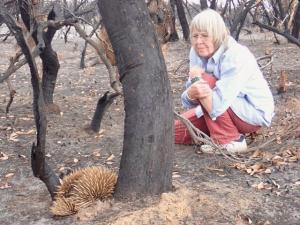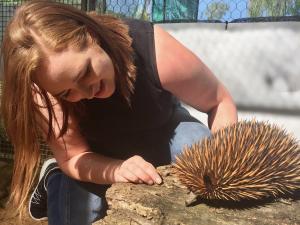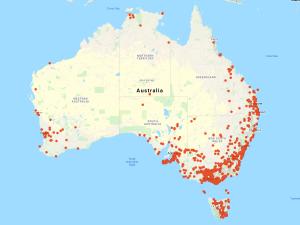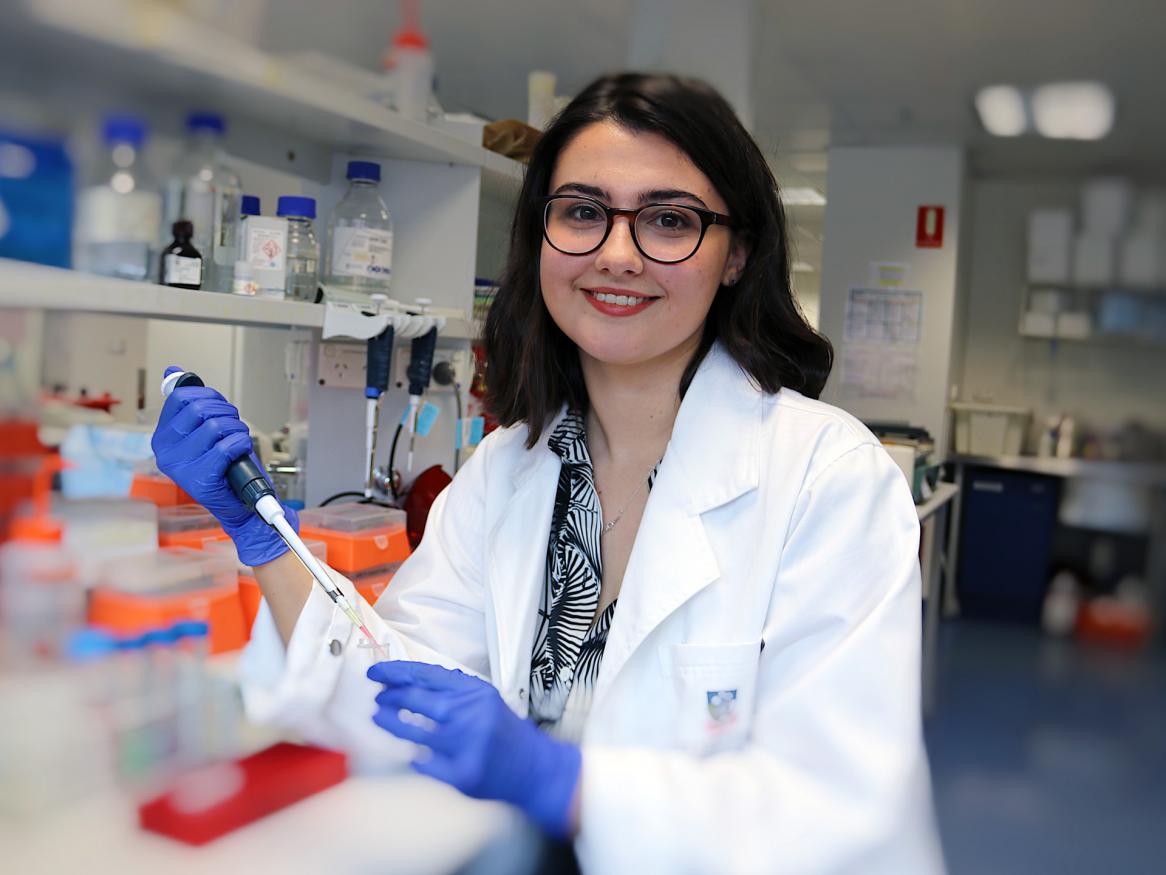Echidna research and conservation
Researchers at the University of Adelaide have been studying the molecular biology of monotremes - both echidna and platypus - for more than ten years.
Being the world’s oldest mammals they are extremely fascinating and we have discovered some incredible surprises about their biology.
Now we are using our knowledge and molecular tools to help with echidna conservation - but we need your help!

Photo by Peter Hastwell
Our echidna research
The short-beaked echidna is an iconic Australian animal and is the most widespread native mammal. Despite this, echidnas are extremely difficult to monitor in the wild and so there are many gaps remaining about their biology and the health of their populations.
The only well-studied echidna population is on Kangaroo Island (KI), thanks to our team member Dr Peggy Rismiller who has been studying echidnas on KI for the past 30 years. Due to Dr Rismiller’s research, the KI echidnas are now listed as endangered.
Echidnas across Australia are likely under more threat than is currently recognised. EchidnaCSI is helping to gather data, perform cutting edge research and connect with communities and government bodies in order to aid long-term echidna conservation.
So far, EchidnaCSI has achieved:
- The largest sighting data of echidnas Australia-wide in the past 5 years.
- Identified that echidnas are living in highly urbanised areas (even in major cities like Sydney and Adelaide).
- The largest and most geographically spread material collection for echidnas.
- Found new information on wild echidna diet and health.
- Partnered with Taronga and Perth Zoos to assess the diet and health of echidnas in captivity.
- Monitored echidna survival and health after the KI bushfires.
- Engaged with thousands of Australians, ranging from young children to retirees.
- Spread awareness nationwide of the conservation concerns for echidnas.
- Provided a platform for echidna research and conservation to thrive.
-
Why do we collect Echidna poo?
Echidna scat is valuable to our research because it contains a lot of interesting and informative molecules such as DNA and hormones.
Due to the latest genomic technologies available today, we can take these molecules from the echidna scat and learn a lot about echidnas without having to actually find, trap and take samples from them. Which is incredibly important as echidnas themselves are very hard to find in the wild.
For example, we can take DNA from the echidna itself and look at how echidnas are related to each other, DNA from the food echidnas eat to accurately determine their diet across different climates and environments, DNA from the bacteria living in their gut, which is a good indicator of health. We can even look at hormones indicating stress or pregnancy.
Echidnas are our animal of interest, but these techniques could be used on any animal scat of your choosing!
-
What is citizen science?
If you’ve never heard this term before, it is simply where the general public collects or analyses data for projects typically organised by scientists/researchers.
We know many people who are extremely passionate about nature and conservation and want to help whenever they can.
We also know that you don’t have to be a ‘scientist’ to do science. What better way to celebrate this than by involving you in projects that will actually contribute to science?
Not only does it mean we can collect and analyse large quantities of data relatively quickly, but we can share the journey and outcomes with people who are excited to contribute and learn.
There are thousands of citizen science projects on all kinds of cool things. If this interests you then you should head to Atlas of Living Australia or Zooniverse to browse more fun projects.
-
Why ‘CSI’ in the name?
CSI stands for 'Conservation Science Initiative' as we ultimately want to help conserve these amazing animals. But we purposefully named it 'CSI' to highlight the forensic aspect of this project.
From popular crime shows like CSI, we know that scientists can get a lot of forensic evidence (like DNA) from something as small as one human hair or a drop of blood, to help solve a crime.
Our project is a little like that, where we can get a lot of evidence about echidnas from DNA and hormones that we find in their scats.
In forensics, the molecules from hair and blood are broken and degraded and there's not much of them in the sample. This is the same for echidna scats and so we use similar techniques to get as much good quality data from them as possible.
With this forensic approach we hope to understand more about wild echidna populations from clues left behind in their poo.
-
Fun facts about echidnas
Echidnas have some of the most unusual biology you will see. Here's a quick list of some fun facts.
- The echidna and their cousin the platypus are the world’s oldest mammals – they are almost 200 million years old!
- Echidnas and platypuses are called monotremes. The word monotreme literally means ‘one hole’.
- Monotremes are the only egg-laying mammals. The egg is only the size of a grape and the shell is very thin, fragile, and has a leathery texture.
- Echidnas only breed during July-September every year, so that is the best time to spot them in the wild as they are most active.
- Echidnas on Kangaroo Island are now listed as endangered.
- Male echidnas have a four-headed penis.
- Echidnas appear on our 5-cent coin. Baby echidnas are so small after they hatch from their egg that it would take 8 baby echidnas to weigh as much as a single 5-cent coin.
- A baby echidna is called a puggle!
- Some echidnas hibernate.
- Unlike all other mammals that have 2 sex chromosomes (XX females, XY males), female echidnas have 10 sex chromosomes (10X) and males have 9 (5X4Y).
- The spines of echidnas are just really thick hairs. They’re made out of keratin, which is the same as what our hair and fingernails are made of.
- Echidnas’ hind feet point backwards. This is to help them dig better.
- Echidnas have a lower body temperature than other mammals, resting at around 30 °C. Their body temperature can also fluctuate 6-8 °C during the day.
- You can’t tell if an echidna is male or female by simply looking at them as they have no gender-specific features and their reproductive organs are internal.
- All echidnas are born with spurs on their hind limbs, similar to what male platypuses have. They are not venomous like in platypus, but the glands underneath the spurs secrete pheromones used for attracting each other during breeding season. Females are meant to lose the spurs as they mature but some retain the spurs, while some males lose them.
People
Dr Tahlia Perry
Postdoctoral Researcher
Professor Frank Grutzner
Genetics researcher
Dr Peggy Rismiller OAM
Visiting Research Fellow
Isabella Wilson
PhD student
Join our team
If you are interested in joining the EchidnaCSI research team in areas of wildlife genomics, conservation, education and/or science engagement, please contact Dr Tahlia Perry or Professor Frank Grutzner. We are currently taking Honours, Masters, and PhD students.
Below is a list of potential projects, however, if you have a particular interest or passion outside these areas please approach us and we would love to discuss them.
Project areas
- Investigating the genetic relationship between echidnas across Australia and determining if species/subspecies listing is accurate.
- Developing molecular tools to investigate echidna diet and how this is linked to their gut microbiome.
- Genetic barcoding of insects on Kangaroo Island to identify species echidnas are consuming and assess insect biodiversity across natural and agricultural areas.
- Investigating how bushfires affect the health and diet of echidnas.
- Genome sequencing and assembly of the long-beaked echidna.
- Engaging with indigenous communities for echidna research in remote areas and increasing indigenous knowledge in citizen science.
- Creating educational resources to embed EchidnaCSI into Primary and High school curriculum.
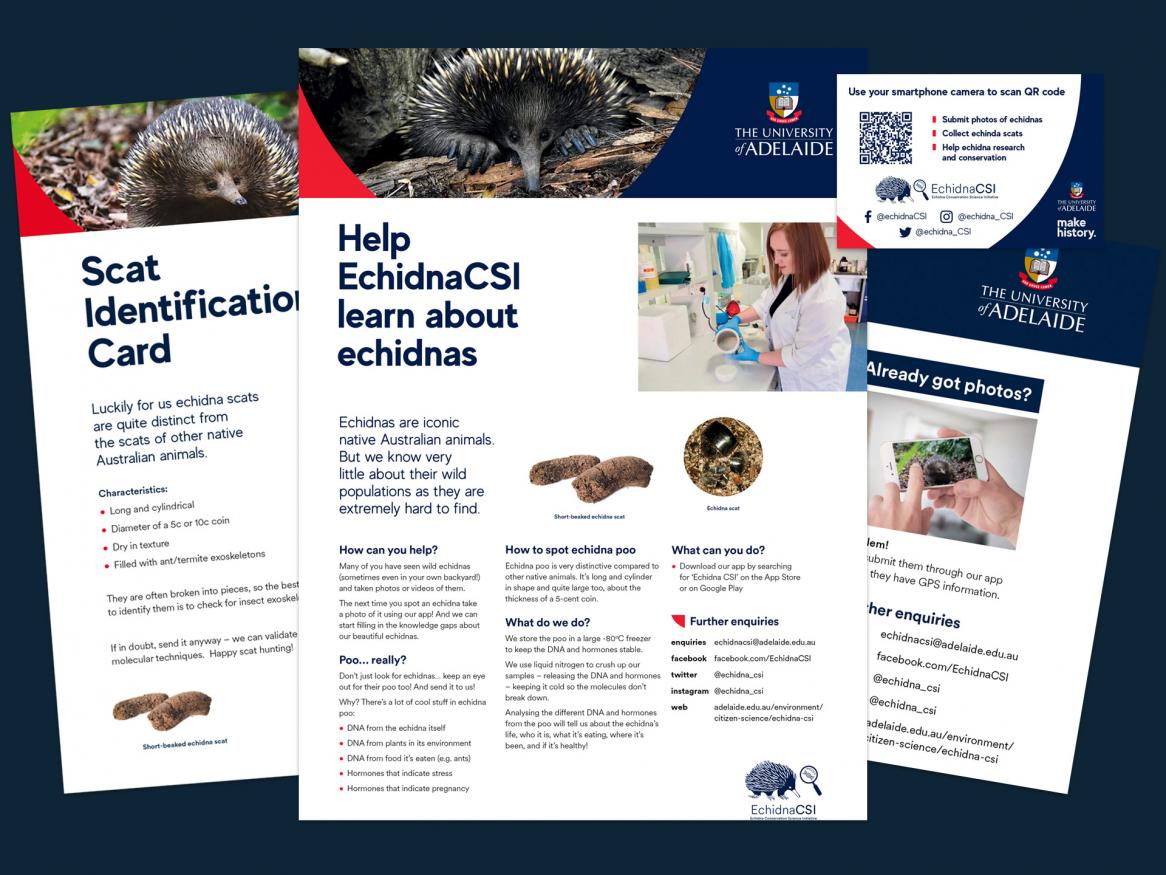
Resources
If you would like a high resolution version of these files for printing, please email us.


